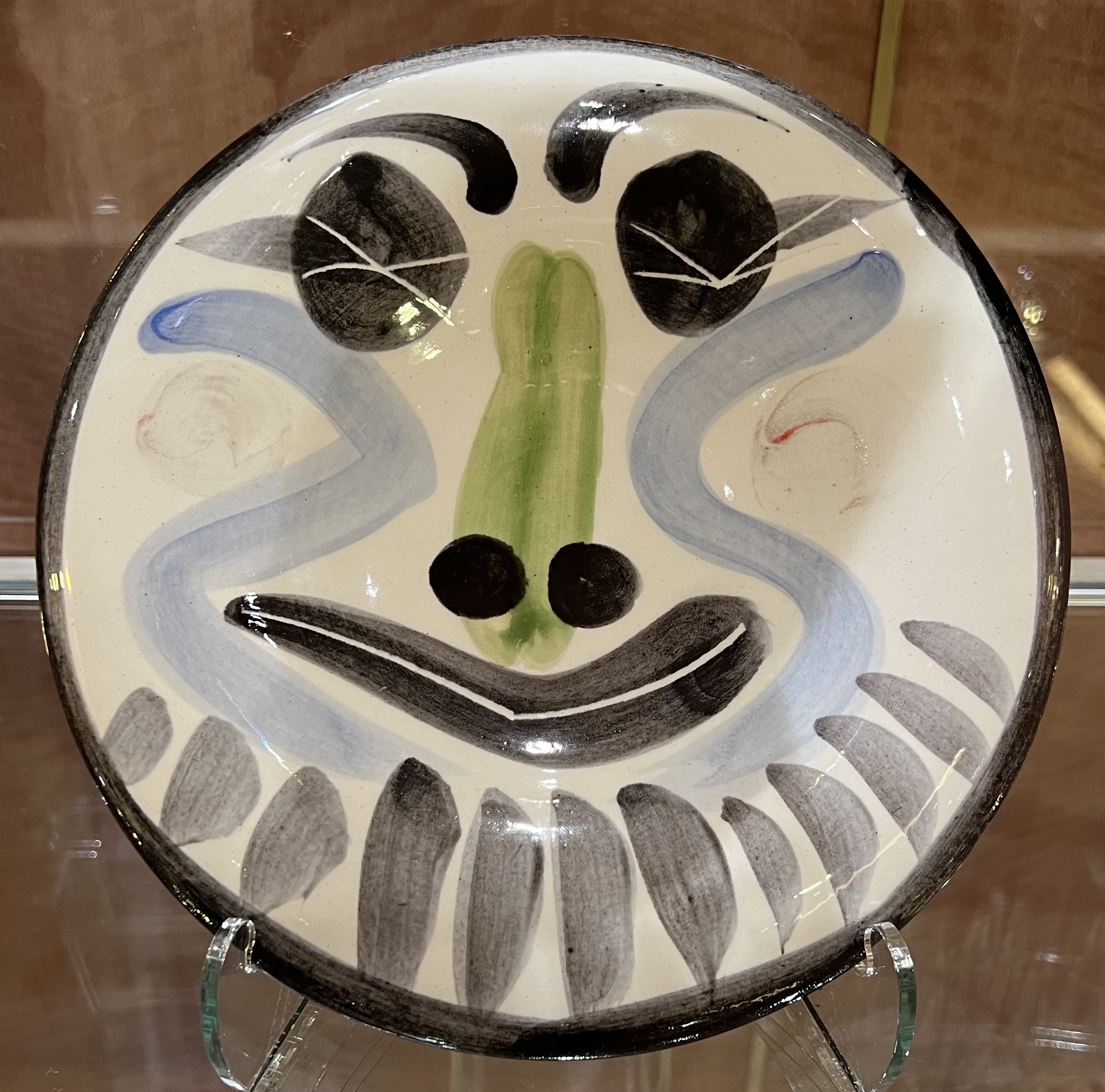| Monthly Tech-Tip | No tracking! No ads! | |
UK Slipware: A Tradition of Terra Cotta and Lead Glaze
No borosilicate glaze can do this
The traditional UK slipware is possible because of the brilliant gloss and hyper transparency of glaze made using lead bisilicate frits. The lead glaze interacts with the colors in underlying slips, dissolving and feathering them (as enabled by the time and temperature of the kiln). Interactions with iron produce warm colors. Ware is bisque fired after the decorating and drying (lower left), then dipped in the leaded glaze. Photo courtesy of Russell Kingston, Lynmouth Slipware Pottery.
Related Pictures
The secret of the higher gloss glaze on the right? A lead frit addition.

This picture has its own page with more detail, click here to see it.
These cone 04 glazes have the same recipe (a version of Worthington Clear sourcing B2O3 from Ulexite instead of Gerstley borate). But the one on the right is more glassy, more transparent. Why? It has 10% added lead bisilicate frit. Lead bisilicate produces dazzling transparent glazes. no other method matches it. While potters gasp at the thought of using lead consider this: They thrive on unstable flux-deprived, glass-deprived and alumina-deprived base stoneware glazes with additions of large percentages of toxic colorants like chrome and manganese!
Picasso’s Transparent Glaze
Micro-bubble free and crystal clear

This picture has its own page with more detail, click here to see it.
This plate, by Pablo Picasso, is on display in the art gallery on our Princess cruise ship. While others notice the underglaze designs, and the $40,000 price, I notice the absolutely crystal clear and bubble free transparent over glaze. How did he do that? At the Madoura studio they used leaded glaze, so Picasso himself doesn’t get the full credit. By his time, European low-fire traditions already had a well-matched clay/glaze system based. Glazes were made from mostly lead bisilicate frit with enough kaolin or ball clay to suspend the slurry. The lead melted so well that significant silica could be tolerated (20–30%) to reduce the COE. They didn’t use talc in the body, rather it would have contained 50-70% ball clay/kaolin, some feldspar as a filler (since it does not flux at low fire) and enough quartz to raise the thermal expansion within the range of the glaze.
Most potters struggling with borosilicate glazes would envy what leaded transparents can do. Any hope of even approaching them using boron glazes lies in keeping temperatures at or below cone 06, a thin glaze application, a low carbon body and ceramic stains rather than metal oxide colors.
Videos
Links
| URLs |
http://www.russellkingstonceramics.co.uk/
Russell Kingston, Lynmouth Slipware Pottery Russell Kingston makes Devonshire Slipware (roots in medieval North Devon). Slip is dipped, poured, brushed, trailed and splashed with animated movements. Colour is achieved using oxides in slips. The terra cotta pots are then fired in a large homemade gas kiln in oxidation about 1100c (cone 03). |
| Glossary |
Slipware
Slipware, in the UK, is terra cotta pieces decorated at leather hard with thixotropic high ball clay slips, then bisque fired and clear glazed with lead bilisicate. |
Got a Question?
Buy me a coffee and we can talk

https://digitalfire.com, All Rights Reserved
Privacy Policy

